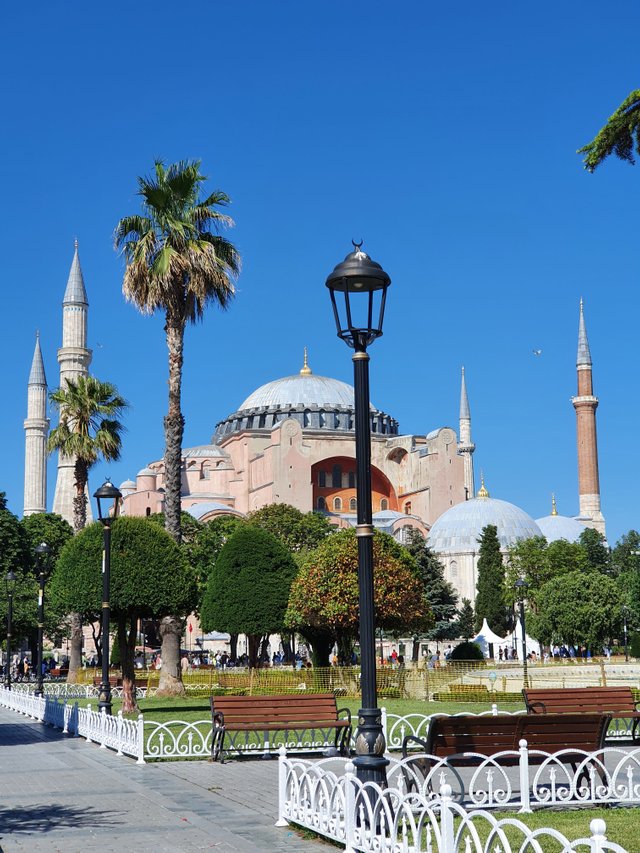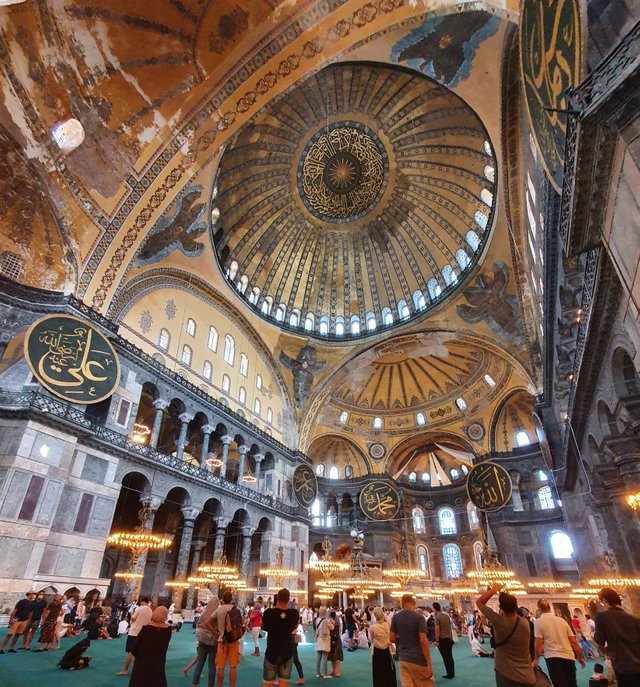Hagia Sophia: A Jewel of Byzantine Architecture
Hagia Sophia, also known as the Church of the Holy Wisdom, is one of the most iconic buildings in Istanbul, Turkey. Originally built as a church in the 6th century, it served as the center of Eastern Orthodox Christianity for over 900 years before being converted into a mosque in the 15th century. Today, it is a museum that attracts visitors from all over the world who marvel at its stunning architecture and rich history.
The Origins of Hagia Sophia
Hagia Sophia was built under the orders of the Byzantine emperor Justinian I and was completed in 537 AD. It was designed by two Greek mathematicians and physicists, Anthemius of Tralles and Isidorus of Miletus, who used innovative engineering techniques to create a massive dome that seemed to float above the structure. At the time of its construction, it was the largest cathedral in the world and remained so for almost a thousand years.
The interior of Hagia Sophia was adorned with exquisite mosaics and frescoes depicting biblical scenes and saints, which were later covered over or destroyed when the building was converted into a mosque. Despite this, some of the original artwork has survived and can still be seen today, including the famous mosaic of the Virgin and Child in the apse.

The Conquest of Constantinople
In 1453, the Ottoman Empire under Sultan Mehmed II conquered Constantinople, the capital of the Byzantine Empire, and converted Hagia Sophia into a mosque. The building underwent significant renovations to accommodate Islamic worship, including the addition of minarets and the removal of much of the Christian artwork.
Under the Ottomans, Hagia Sophia served as a mosque for almost 500 years, becoming a symbol of Islamic triumph over Christianity. In 1935, it was converted into a museum by the Turkish Republic, which sought to transform the building into a symbol of secular modernity.
A Symbol of Unity and Divisiveness
Over the centuries, Hagia Sophia has played an important role in the history and identity of Istanbul, Turkey, and the wider world. Its stunning architecture and artwork have inspired countless artists and architects, and its religious significance has made it a potent symbol of both unity and divisiveness.
In 2020, the Turkish government converted Hagia Sophia back into a mosque, a move that was met with controversy and protest from many around the world who viewed it as an attempt to erase the building's Christian heritage and undermine its status as a symbol of secularism and tolerance.

Today, Hagia Sophia remains an enduring testament to the ingenuity and creativity of human civilization, and a reminder of the complex histories and identities that shape our world.